
fICOU BOM
- Subject:
- Applied Science
- Architecture and Design
- Material Type:
- Lecture
- Date Added:
- 02/25/2019

fICOU BOM
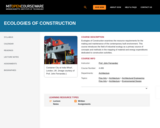
Ecologies of Construction examines the resource requirements for the making and maintenance of the contemporary built environment. This course introduces the field of industrial ecology as a primary source of concepts and methods in the mapping of material and energy expenditures dedicated to construction activities.

Students learn how rooftop gardens help the environment and the lives of people, especially in urban areas. They gain an understanding of how plants reduce the urban heat island effect, improve air quality, provide agriculture space, reduce energy consumption and increase the aesthetic quality of cities. This draws upon the science of heat transfer (conduction, convection, radiation, materials, color) and ecology (plants, shade, carbon dioxide, photosynthesis), and the engineering requirements for rooftop gardens. In the associated activity, students apply their scientific knowledge to model and measure the effects of green roofs.

This is a project to assist in the design, drawing, modeling and hopefully constructing of a small Community Children’s Center near Guayaquil, Ecuador. For the last year, Nicki Lehrer, from MIT’s Aero/Astro Department, has been organizing efforts to build the project. The goal of the workshop is to provide her with a full fleshed out design for the community center so it can be built in the summer of 2007.

EduGorilla works in multiple educational sectors but its highly focused area is test series. It is India’s largest test series provider for 1250+ exams conducted throughout the country including a few abroad exams also. EduGorilla helps aspiring students to accomplish their dreams with its highly recommended mock tests and online test series.
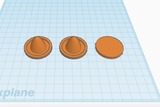
This is a lesson plan for beginners to 3D modeling. The project provided in the lesson is easy to print using a 3D printer.
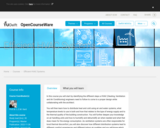
In this course you will start by identifying the different steps a HVAC (Heating, Ventilation and Air Conditioning) engineers need to follow to come to a proper design while collaborating with the architect.
You will then learn how to distribute heat and cold using air and water systems, what temperature levels to use in both and how that relates to the type of energy supply and to the thermal quality of the building construction. You will further deepen your knowledge on air handling units and how to humidify and dehumidify air when needed and what that does mean for the energy consumption. As ventilation systems are often responsible for local thermal discomfort, you will also discover how different distribution systems lead to different comfort experiences and different indoor air qualities and you will know which simple control techniques can be applied.
Finally you will study a modern complex system consisting of an aquifer thermal storage, heat pump, boiler, solar collector, PV-cells, air handling unit, water and air distribution systems. This will allow you to develop skills to catch the complexity of such HVAC systems and to understand the basic rules of how to control them to get the best out of them and how to use data from the Building Energy Management System to help you in this task.
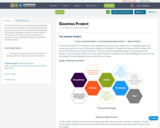
The “Einstein Project” is a framework that is designed to help you find a solution to an everyday problem that makes you passionate in your thinking and designing. This project is designed to make you think outside of the box as active learners and create solutions in uncommon ways, forget about failing or succeeding and take chances.

This modul is about Electrical Engineering
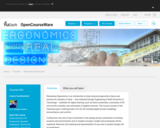
Elementary Ergonomics is an introduction to basic physical ergonomics theory and practice for students of other - than Industrial Design Engineering of Delft University of Technology - institutes for higher learning, such as Dutch universities, universities of EU and non-EU countries, and universities of applied sciences. The course consists of the following topics: anthropometry (1D, 2D, 3D including digital human modelling), biomechanics, and comfort.
Furthermore, the role of user involvement in the design process (evaluation of existing products and environments and of created concepts, models and prototypes) will be explained. Moreover, the meaning and representation of use cues in product design will be highlighted.
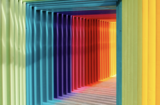
OverviewStudents will be introduced to (or quickly review) the elements of design in this one-day lesson. Students will begin with a Quizzizz game. Next, the students will use a notes sheet to follow along with a slide deck to learn about this topic. While taking notes, students will doodle, write, reflect, and discuss the elements of design as prompted by the slides. Discussion questions are included in the Notes section on each slide. At the end of the class period, the students will watch a music video and discuss how the elements of design are incorporated into the video. If there is extra time, additional discussion questions are included at the end of the slide deck. Essential QuestionWhat should be done about students learning to use the elements of design to create a visually appealing end result?
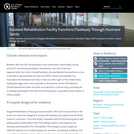
During Hurricane Sandy, as the storm surge incapacitated buildings all along the New York and New Jersey coasts, Seagate Seagate Rehabilitation & Nursing Center functioned precisely as planned. At the peak of the storm, floodwaters filled the parking area and reached the lobby door, but did not enter the building. Emergency power generators remained safe and supplied backup power for four days despite an area-wide power outage. The nursing home’s emergency plans for food and medical supplies enabled staff and patients to shelter in place despite limited transportation for incoming supplies. Seagate not only provided continuous care to its residents during and after Sandy, it also assisted local community members seeking food and shelter.

This course will focus on providing students with the tools needed to practice responsible architecture in a contemporary context. It will familiarize students with the materials currently used in responsible practice, as well as the material properties most relevant to assembly. The course will also introduce students to materials that are untested but hold promise for future usage. Finally, the course will challenge students to refine their understanding of responsible or sustainable design practice by looking at the evolution of those ideas within the field of architecture.
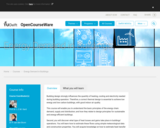
Building design strongly influences the quantity of heating, cooling and electricity needed during building operation. Therefore, a correct thermal design is essential to achieve low energy and low carbon buildings, with good indoor air quality.
This course will enable you to understand the basic principles of the energy chain: demand, supply and distribution; and how they relate to design principles for sustainable and energy-efficient buildings.
Second, you will discover what type of heat losses and gains take place in buildings’ operations. You will learn how to estimate these flows using simple meteorological data and construction properties. You will acquire knowledge on how to estimate heat transfer through construction, ventilation, solar radiation or caused by internal sources or heat storage in the construction.
Third, you will learn to make estimates of buildings’ energy needs on an hourly basis by using simple static energy balances: how much energy comes in and out and which air temperature is needed? When is there heating or cooling? How much electricity is needed?
Fourth, you will discover how to extend your estimates to yearly energy demand, which is essential to make sure that a building is energy efficient and to estimate energy savings and energy costs. You will then also be able to determine the size of the needed heating and cooling equipment (which determines the costs of equipment).
Finally, you will learn how to optimize building design and will be able to find out the optimal window size or the optimum insulation thickness for your building. You will know why putting windows on the south façade is not always energy-efficient. You will understand the thermal interactions between building components and be able to make informed decisions on how to increase the energy efficiency of new and existing buildings.
This course is part of the PCP Buildings as Sustainable Energy Systems. In the other courses in this program you can learn how to choose low carbon energy supply, how to create a comfortable indoor environment, and how to control and optimize HVAC systems.
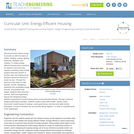
We all know that it takes energy to provide us with the basics of shelter: heating, cooling, lighting, electricity, sanitation and cooking. To create energy-efficient housing that is practical for people to use every day requires combining many smaller systems that each perform a function well, and making smart decisions about the sources of power we use. Through five lessons on the topics of heat transfer, circuits, daylighting, electricity from renewable energy sources, and passive solar design, students learn about the science, math and engineering that go into designing energy-efficient components of smart housing that is environmentally friendly. Through numerous design/build/analyze activities, students create a solar water heater, swamp cooler, thermostat, model houses for testing, model greenhouse, and wind and water turbine prototypes. It is best if students are concurrently taking Algebra 1 in order to complete some of the worksheets.
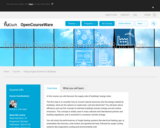
In this course, you will discover the supply side of buildings’ energy chain.
The first step is to consider how to convert natural resources into the energy needed by buildings: what are the options to create heat, cold and electricity? You will learn about efficiency and use this concept to estimate building’s primary energy use and carbon emissions. This concept is widely used in many national and international policies and building regulations, and is essential to counteract climate change.
You will study the performances of single heating systems like electrical heating, gas, or renewables like biomass, solar boilers and geothermal heat, followed by single cooling systems like evaporative cooling and environmental cold.
We will also examine the systems that concurrently produce heat and cold. Do you know for instance that a heat pump and a cooling machine are identical devices? You will learn about the basic working principles of heat pumps and how to make sure they achieve high performance levels. After this course you will know how an Aquifer Thermal Storage makes smart use of the ground to deliver cold in summer and heat in winter.
Diverse electricity generation methods using turbines (wind, hydro), photovoltaics or hydrogen fuel cells will also be examined. You will learn how cogeneration of heat and power works and why this is important for the rational use of energy resources. You will also know why heat pumps are often combined with boilers or to which extent it is worth to invest in batteries for your solar panels.
By the end of the course you will be able to decide on how to combine energy conversion systems at building level in order to match buildings’ energy demand while keeping costs acceptable, using a minimum of natural resources and producing a minimum of carbon emissions.
This course is part of the program Buildings as Sustainable Energy Systems. In the other courses in this program you can learn how to design buildings with low energy demand, how to create a comfortable indoor environment, and how to control and optimize HVAC systems.
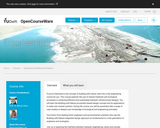
If you’re interested in the concept of building with nature, then this is the engineering course for you. This course explores the use of natural materials and ecological processes in achieving effective and sustainable hydraulic infrastructural designs. You will learn the Building with Nature ecosystem-based design concept and its applications in water and coastal systems. During the course, you will be presented with a range of case studies to deepen your knowledge of ecological and engineering principles.
You’ll learn from leading Dutch engineers and environmental scientists who see the Building with Nature integrated design approach as fundamental to a new generation of engineers and ecologists.
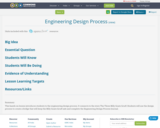
This hands-on lesson introduces students to the engineering design process. It connects to the story The Three Billy Goats Gruff. Students will use the design process to create a bridge that will keep the Billy Goats Gruff safe and complete the Engineering Design Process Journal.
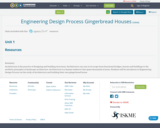
Architecture is the practice of designing and building structures. Architecture can vary in its scope from functional bridges, houses and buildings to the aesthetic principles of landscape architecture. Architecture is a human endeavor that spans thousands of years. Students will be introduces to Engineering Design Process via the study of Architecture and building their own gingerbread house
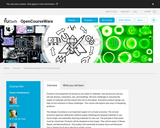
Products and equipment all around us are made of materials: look around you and you will see phones, computers, cars, and buildings. We face challenges in securing the supply of materials and the impact this has on the planet. Innovative product design can help us find solutions to these challenges. This course will explore new ways of designing products.
The design of products is an important aspect of a circular economy. The circular economy approach addresses material supply challenges by keeping materials in use much longer and eventually returning materials for new use. The principle is that waste must be minimized. Products will be designed to last longer. They will be easier to Reuse, Repair, and Remanufacture. The product will eventually be broken down and Recycled. This is Design for R and is the focus of this course.
Experts from leading European universities and research organizations will explain the latest strategies in product design. Current design approaches lead to waste, loss of value and loss of resources. You will learn about the innovative ways in which companies are creating value, whilst securing their supply chains, by integrating Design for R.
This course is suitable for all learners who have an interest in product design, innovative engineering, new business activity, entrepreneurship, sustainability, circular economy and everyone who thinks that the current way we do things today needs a radical rethink.